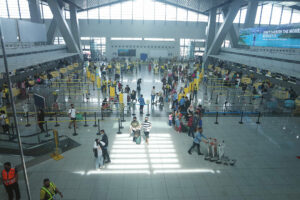DoF: Revenue from privatized NAIA eases pressure to tax
THE REMITTANCE of the P30-billion upfront payment by the proponent of the Ninoy Aquino International Airport (NAIA) modernization project represents the start of a revenue stream that will relieve the pressure on the government to impose new taxes, Department of Finance (DoF) said. “We are hitting two birds with one stone on this project. This […]

THE REMITTANCE of the P30-billion upfront payment by the proponent of the Ninoy Aquino International Airport (NAIA) modernization project represents the start of a revenue stream that will relieve the pressure on the government to impose new taxes, Department of Finance (DoF) said.
“We are hitting two birds with one stone on this project. This will not only transform NAIA into a world-class airport, but also guarantees the government a healthy income stream from the private-sector operator,” Finance Secretary Ralph G. Recto said in a statement.
The Manila International Airport Authority (MIAA) remitted the upfront payment to the Bureau of the Treasury on Sept. 16, the DoF said. Responsibility for NAIA operations and maintenance (O&M) was turned over to the San Miguel Corp.-led New NAIA Infra Corp. (NNIC) on Sept. 14.
The government is expected to generate around P900 billion in revenue or P36 billion annually from the deal over the 25-year concession period.
As of the end of July, the government collected P368.8 billion in non-tax revenue, or 92.2% of its P400 billion target for this year.
The DoF is keen on maximizing non-tax revenue to stave off the need for new taxes.
The MIAA Board awarded the project contract to the NNIC on Feb. 16. Under the deal, the proponent will make a P30-billion upfront payment, a P2-billion annual payment, and an 82.16% National Government revenue share, excluding passenger service charges.
The NAIA rehabilitation will cost P170.6 billion, making it the largest public-private partnership deal of the Marcos administration.
It is expected to increase the airport’s capacity from 35 million passengers to 62 million annually, and improve aircraft movements per hour from 40 to 48. — Beatriz Marie D. Cruz























